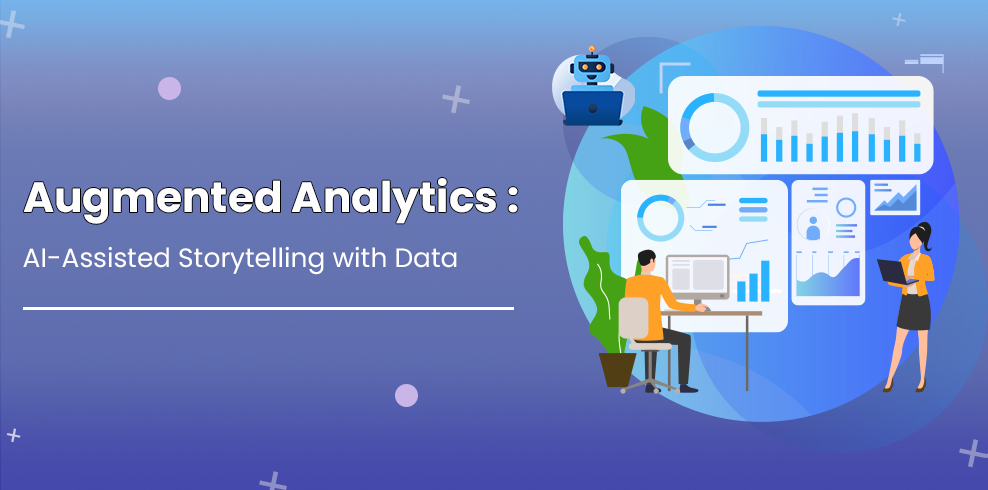Bridging the Gap: Behavioral and Conversion Modeling in GA4 with Google Consent Mode v2
06th Aug 2024
3 Minutes Read
By Anshul Dhurandhar

In today's digital marketing landscape, understanding user behavior is critical for success. However, with increasing privacy regulations and user awareness, traditional cookie-based tracking methods are losing effectiveness. This blog delves into how Google Analytics 4 (GA4) tackles this challenge by combining Behavioral Modeling and Conversion Modeling with Google Consent Mode v2 (CMv2). This powerful trio empowers you to gain valuable insights into user journeys and optimize conversions even when users opt-out of tracking.
The Cookie Crumbles: The Challenge of Traditional Analytics
Traditional analytics platforms rely on cookies to track user behavior and identify conversions. Cookies store data points like browsing history, preferences, and even user identifiers. But with growing concerns about data privacy, many users choose to block cookies. This leads to a significant data gap, hindering your ability to understand user behavior and optimize conversions accurately.
Enter GA4: A Paradigm Shift in Analytics
GA4 offers a revolutionary approach to data collection, focusing on privacy-centric and event-based tracking. Here's how it tackles the challenges of a cookie-less future:
- Event-Based Tracking: GA4 captures specific user interactions on your website or app as events, such as page views, button clicks, and form submissions. This approach provides valuable insights into user behavior regardless of cookies.
- Machine Learning: GA4 leverages machine learning for both Behavioral and Conversion Modeling. These models analyze historical data to identify patterns and trends in user behavior, even for users who haven't consented to tracking.
Behavioral Modeling: Unveiling the User Journey
What is it? Behavioral Modeling uses machine learning algorithms to fill in missing data gaps in user behavior. Here's how it works:
- Analyzing User Patterns: GA4 analyzes historical data from both consenting and non-consenting users to understand how users typically interact with your website or app.
- Predictive Modeling: Based on these patterns, the algorithms create a model to predict the likely behavior of users who haven't consented to tracking.
- Unveiling Hidden Insights: This allows you to gain insights into page views, clicks, and other user interactions that would have been lost due to missing cookie data. Imagine you run an e-commerce store. With Behavioral Modeling, you can still understand which product categories users browse, even if they haven't consented to tracking and haven't logged in. This allows you to see which product categories are most engaging and potentially identify areas for website optimization.
Conversion Modeling: Closing the Conversion Loop
What is it? Conversion Modeling takes Behavioral Modeling a step further by predicting the likelihood of conversion for non-consenting users.
- Predicting Conversion Probability: Using historical data and insights from Behavioral Modeling, the algorithms estimate the probability of a user completing a desired action (e.g., purchase, signup) even without complete tracking data.
- Data-Driven Attribution: This allows for a more complete picture of how users journey towards conversions, leading to more accurate attribution of credit across various touchpoints. For instance, imagine a user sees a social media ad for your product, clicks through, browses your website on a non-cookie enabled browser, and ultimately makes a purchase. With Conversion Modeling, you can gain insights into the role that social media ad played in driving that conversion, even though cookie-based tracking wasn't available throughout the entire journey.
Google Consent Mode v2: Respecting Privacy While Gathering Insights
What is it? Google Consent Mode v2 works hand-in-hand with Behavioral and Conversion Modeling to enhance data collection in a privacy-conscious manner. Here's how:
- Respecting User Choice: CMv2 allows users to opt out of cookie-based tracking while still accessing your website or app.
- Enhanced Data Collection (Basic vs. Advanced): Even for non-consenting users, CMv2 allows GA4 to collect certain data points in "Advanced Mode" (e.g., IP address, browser user agent) that can be anonymized and used for modeling purposes. Basic Mode does not send any data without consent.
- Data Aggregation: These anonymized data points are aggregated to create conversion signals that inform the machine learning algorithms within Behavioral and Conversion Modeling.
The Benefits of This Powerful Trio
By leveraging Behavioral and Conversion Modeling alongside CMv2, you gain several key advantages:
- More Accurate Insights: Gain a more complete understanding of user behavior and conversion patterns, regardless of users' consent status.
- Improved Attribution Models: Analyze the complete user journey, leading to better attribution of credit for conversions across various marketing channels.
- Data-Driven Decision Making: Make informed decisions about marketing campaigns, website optimization, and user experience.
Conclusion
Read more about Understanding Google Consent v2 and its impact on Google Ads.


